A Full Guide to LEED Certification
Sustainability practices and green buildings are more popular than ever, making a strong LEED rating extremely desirable to both building owners and prospective occupants. In this blog post, we’ll take a closer look at what the LEED certification system is, why it matters, and some of the benefits you can expect from going through the certification process.
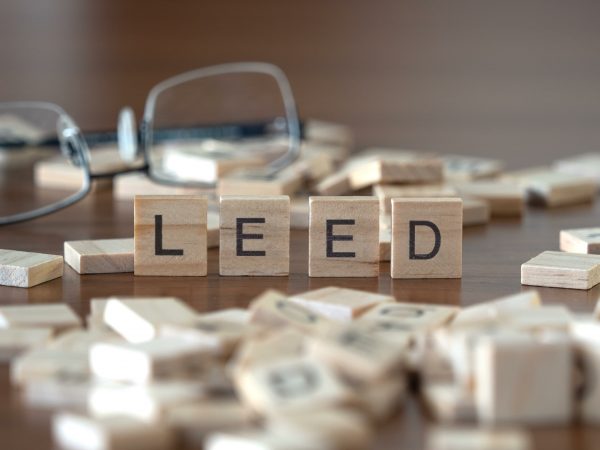
Contents
- 1 What is LEED Certification and What Does It Stand For?
- 2 Different Types of LEED Rating Systems
- 3 Why is LEED Certification Important?
- 4 What Are the Goals of the LEED System?
- 5 How Has the LEED Rating System Evolved Over Time?
- 6 How Does a Business Go About Getting LEED Certified?
- 7 What Are the Four Levels of LEED Certification?
- 8 How Many Credits are Required for Each Level of LEED Certification?
- 9 How are LEED Credits Allocated?
- 10 Does LEED Certification Expire?
- 11 What Are Some of the Benefits of LEED Certification?
- 12 Are There Any Drawbacks to Pursuing LEED Certification?
- 13 How Much Does It Cost to Get LEED Certified?
What is LEED Certification and What Does It Stand For?
If you’re unfamiliar with the term, LEED certification is a stamp of approval from the United States Green Building Council (USGBC) that signifies that a building or renovation project meets their high standards for environmentally friendly and sustainable construction. The acronym LEED stands for Leadership in Energy and Environmental Design. To receive LEED certification, a building must score points in several different categories, including water usage, indoor air quality, energy efficiency, reduction of waste, and material selection. In addition, the building must also meet a minimum threshold for overall energy efficiency. While the standards for LEED certification are relatively high, the benefits of certification are significant. Buildings with LEED certification often enjoy lower operating costs, higher rents, and increased market value. As a result, the number of LEED-certified buildings has grown rapidly in recent years, as more and more developers seek to cash in on the green building boom.
Different Types of LEED Rating Systems
The LEED certification framework differs depending on the type of project assessed. Both commercial and residential buildings can be LEED certified, however, the rating system changes depending on the type and phase of the building.
The current rating systems in place include:
- Building Design and Construction (BD+C)
- Building Operations and Maintenance (O+M)
- Interior Design and Construction (ID+C)
- Neighborhood Development (ND)
- Homes
- Cities and Communities
- LEED Recertification
- LEED Zero
As previously mentioned, these rating systems cover a wide range of building phases such as major renovations, fit outs, and new builds.
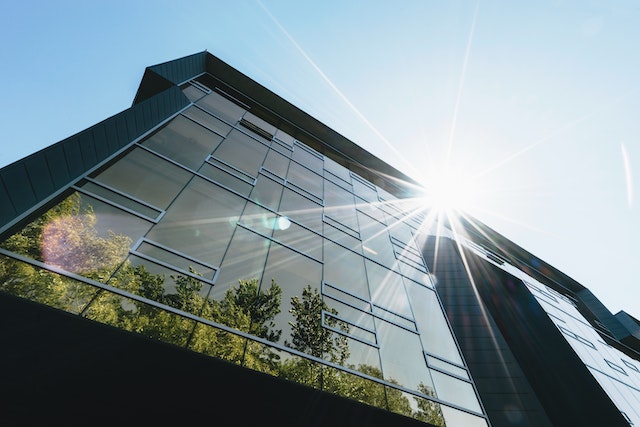
Why is LEED Certification Important?
LEED certification is critical because it verifies that a building is utilizing the proper green methods to save energy, water, and other key resources. Buildings with a strong LEED rating are also more trusted by prospective occupants and often cost less to maintain due to their strong sustainability practices. LEED-certified buildings are also typically more comfortable and healthier for occupants, thanks to improved indoor air quality, better natural lighting, high-quality waste management, minimal to no pollution, and numerous additional factors. In the modern day, LEED is the most common and well-respected green building rating system across the globe. For all these reasons, pursuing LEED certification is a smart choice for any building owner.
What Are the Goals of the LEED System?
According to the USGBC website, the goal of the LEED system is to create improved buildings that:
- Reduce contribution of commercial buildings to climate change
- Protect and restore water resources
- Promote sustainable and regenerative material cycles
- Enhance quality of life
- Protect and enhance biodiversity and ecosystem services
- Enhance individual human health
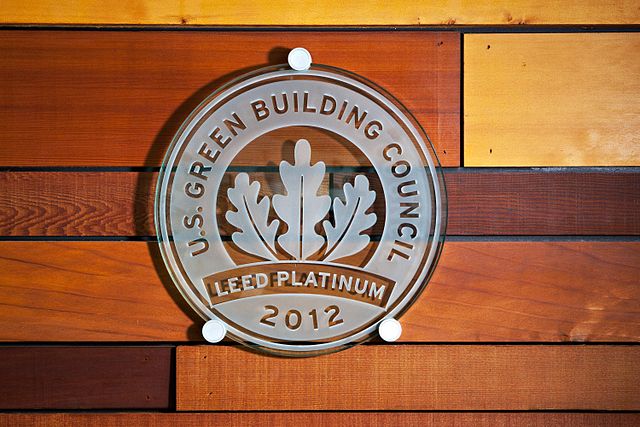
Image Credit: Blanchethouse, Wikimedia
How Has the LEED Rating System Evolved Over Time?
The LEED rating system was created in 2000 as a way to encourage builders to construct more energy-efficient and sustainable buildings. Since then, the system has undergone several revisions, with the most recent update entering beta in 2020. This latest version, LEED v4.1, makes changes to credit requirements which place them more in line with modern standards. For example, Location and Transportation (LT) requirements have been altered to focus more on the practical aspects of transport, such as the frequency of transit services as opposed to simply the number of nearby transit stops. LEED v4.1 also places more emphasis on energy usage, as highlighted by the fact that over 30% of all LEED points are found within the Energy and Atmosphere category. As the world continues to grapple with the issue of climate change, it is likely that the LEED rating system will continue to evolve in order to reflect the latest scientific knowledge about sustainable building practices.
How Does a Business Go About Getting LEED Certified?
The LEED certification process can be broken down into four key steps. Firstly, you have to pay a registration fee and register your project under one of the various LEED rating systems. Secondly, you apply for an LEED certification by completing an application and paying associated review fees depending on the size of the building and type of review sought. Then, a review will be conducted by the USGBC’s Green Building Certification Institute – usually taking 3 business weeks. Finally, your project will be certified with a LEED rating based on the number of credits (points) gained during the review process. The entire process can take several months to complete, but the benefits of LEED certification make it well worth the effort.
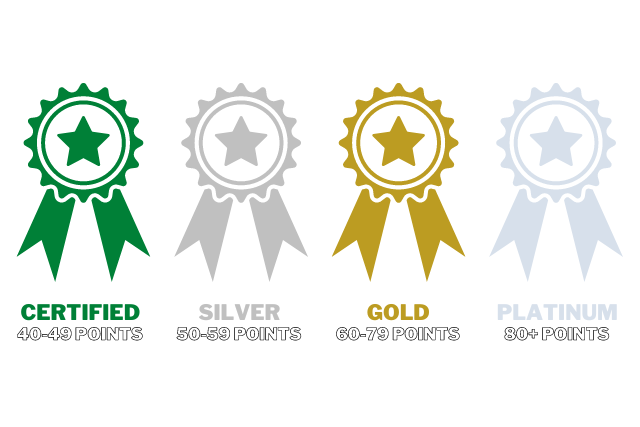
What Are the Four Levels of LEED Certification?
There are four levels of LEED certification: certified, silver, gold, and platinum. To earn points, projects must meet certain standards in eight different categories: location and transport, sustainable sites, water efficiency, energy and atmosphere, materials and resources, indoor environmental quality, innovation, and regional priority. Projects can earn extra points by meeting additional standards in specific categories, such as the addition of solar panels or the use of recycled materials.
How Many Credits are Required for Each Level of LEED Certification?
In order to achieve LEED certification, projects must earn a certain number of points (also known as credits). The number of points required varies depending on the specific LEED program and the project’s location. However, all LEED certification levels require a minimum of 40 points.
As previously noted, LEED certification is divided into four levels. Certified is the entry-level certification, and requires a minimum of 40 points. Silver certification requires a minimum of 50 points. Gold certification requires a minimum of 60 points. Platinum certification, the highest level of LEED certification, requires a minimum of 80 points. The absolute maximum possible score under the current system is 110 points.

How are LEED Credits Allocated?
Currently, LEED credits are split between eight different categories. These include:
- Location and Transportation
- E.g. Support of electric vehicles, access to practical transit, quality bike facilities, and reduced parking footprints
- Sustainable Sites
- E.g. Use of existing buildings, protecting and restoring local habitats, reduction of light pollution, and rainwater management
- Water Efficiency
- E.g. Indoor and outdoor water reduction, water metering, and cooling tower water use
- Energy and Atmosphere
- E.g. Energy metering, renewable energy production, green power and carbon offsets, optimized energy performance, and refrigerant management
- Materials and Resources
- E.g. Recycling, disclosure and optimization of building products, and construction waste management
- Indoor Environmental Quality
- E.g. Tobacco smoke control, minimum air quality standards, natural lighting, acoustics, temperature control, quality views, and general interior lighting
- Innovation
- Regional Priority

Does LEED Certification Expire?
While LEED certification does not expire, certified buildings are required to undergo a recertification process every five years in order to maintain their status. The recertification process includes an evaluation of the building’s performance over time, as well as any changes that have been made to the building since it was originally certified. By remaining up-to-date with the latest LEED standards, certified buildings can continue to showcase their commitment to sustainability. Receiving LEED certification is a valuable achievement for any business, and one that can pay dividends for years to come.
What Are Some of the Benefits of LEED Certification?
There are many benefits to pursuing LEED certification for a business. First and foremost, it is great for the environment. LEED-certified buildings are designed with sustainability in mind, from the materials used to construct them to the way they are powered. This can help businesses reduce their carbon emissions and make a positive impact on the planet. Additionally, the green building principles behind LEED-certified buildings tend to make them more energy-efficient, something which can ultimately save businesses money on their utility bills. They also usually have better indoor air quality, which can create a more comfortable and healthier environment for employees. Finally, LEED certification can be a great marketing tool, helping businesses stand out from the competition and attract customers who care about sustainable practices. For all these reasons, businesses should definitely consider pursuing LEED certification.
Are There Any Drawbacks to Pursuing LEED Certification?
While there are many benefits to pursuing LEED certification for a new building, there are also some potential drawbacks. One of the biggest is the cost. The process of pursuing LEED certification can be time-consuming and expensive, and there is no guarantee that the investment will pay off. In addition, LEED certified buildings often have stricter energy consumption requirements, which can lead to higher operating costs. Some businesses may also find the added scrutiny from the USGBC to be burdensome. As a result, pursuing LEED certification is not a decision to be made lightly, businesses must carefully consider whether the benefits outweigh the drawbacks before moving forward with the process.
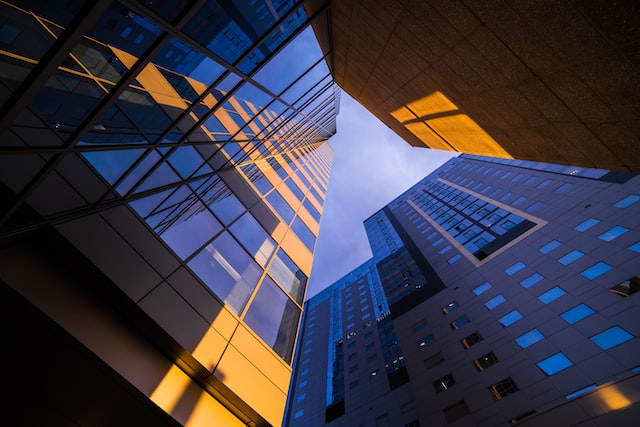
How Much Does It Cost to Get LEED Certified?
The cost of becoming LEED certified varies depending on the size of the building, as well as the category in which it is seeking certification. However, most LEED projects incur costs in the range of $50,000 to $100,000. Discounted pricing is given to USGBC members, with Silver, Gold and Platinum level members receiving the best rates.
You can find a brief breakdown of LEED certification fees for the Building Design and Construction rating system below:
Registration Fee: $1,200-$1,500
Precertification Fee: $4000-$5000
Combined (Design + Construction) Certification Review Fee
- Less than 250,00 sq/ft: $0.057-0.068 per sq/ft
- 250,000-499,999 sq/ft: $0.055-0.066 per sq/ft
- 500,000-749,999 sq/ft: $0.050-0.060 per sq/ft
- 750,000+ sq/ft: Prices vary
It should also be noted that additional fees can be paid to expedite reviews. Additionally, split reviews can be conducted over just the design or construction aspects of the project, in which rates will be lower than those listed above. It’s also important to highlight that these fees are not representative of those seen in projects under the Interior Design and Construction, Building Operations and Maintenance, Neighborhood Development, Residential, and Recertification rating systems.
While this may seem like a significant investment, many building owners find that the increased efficiency and reduced operating costs more than offset the initial expense. In addition, LEED-certified buildings often command higher rents and sell for higher prices than their non-certified counterparts. As a result, becoming LEED certified can be a smart financial decision as well as a commitment to sustainability.
Further Insights
Looking for more articles about the US office market and general office matters? You can find a number of recent posts below! Alternatively, if you’re a business or freelancer looking for flexible workspace in the US, we can help to connect you to a wide range of serviced offices and coworking spaces in highly sought-after locations such as New York City, Los Angeles, Houston, Atlanta, Miami, Chicago, and Dallas. You can also call us to have a discussion about your requirements on 972-913-2742 or reach out to us on Facebook and Twitter.
A Full Guide to Commercial Lease Assignment (Lease Transfer)
Miami Office Market Report | Q2-Q3 2022
Mid-2022 Las Vegas Office Market Report
The Impact of Proptech on Commercial Real Estate
15 In-Person Employee Recognition Ideas for the New World of Work
Mid-2022 Houston Commercial Real Estate Market Report
Coworking Space for Students on U.S. College Campuses
How the Decentralization of Cities Has Changed the U.S. Office Space Market
US Office Market Trends 2022 – Statistics, Challenges and Outlook